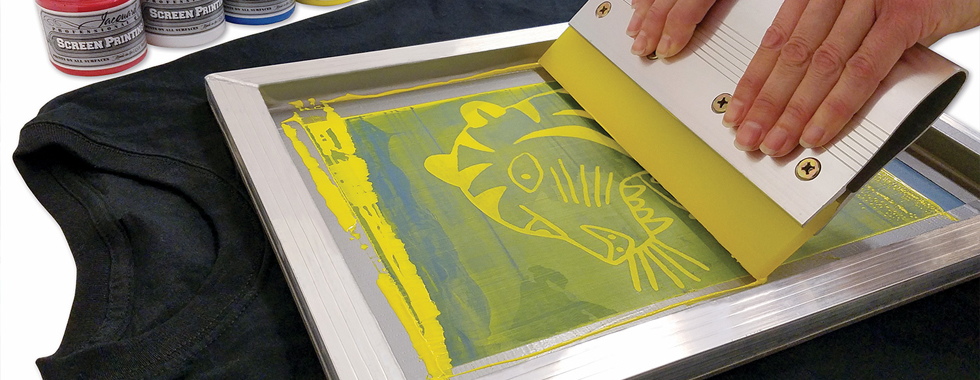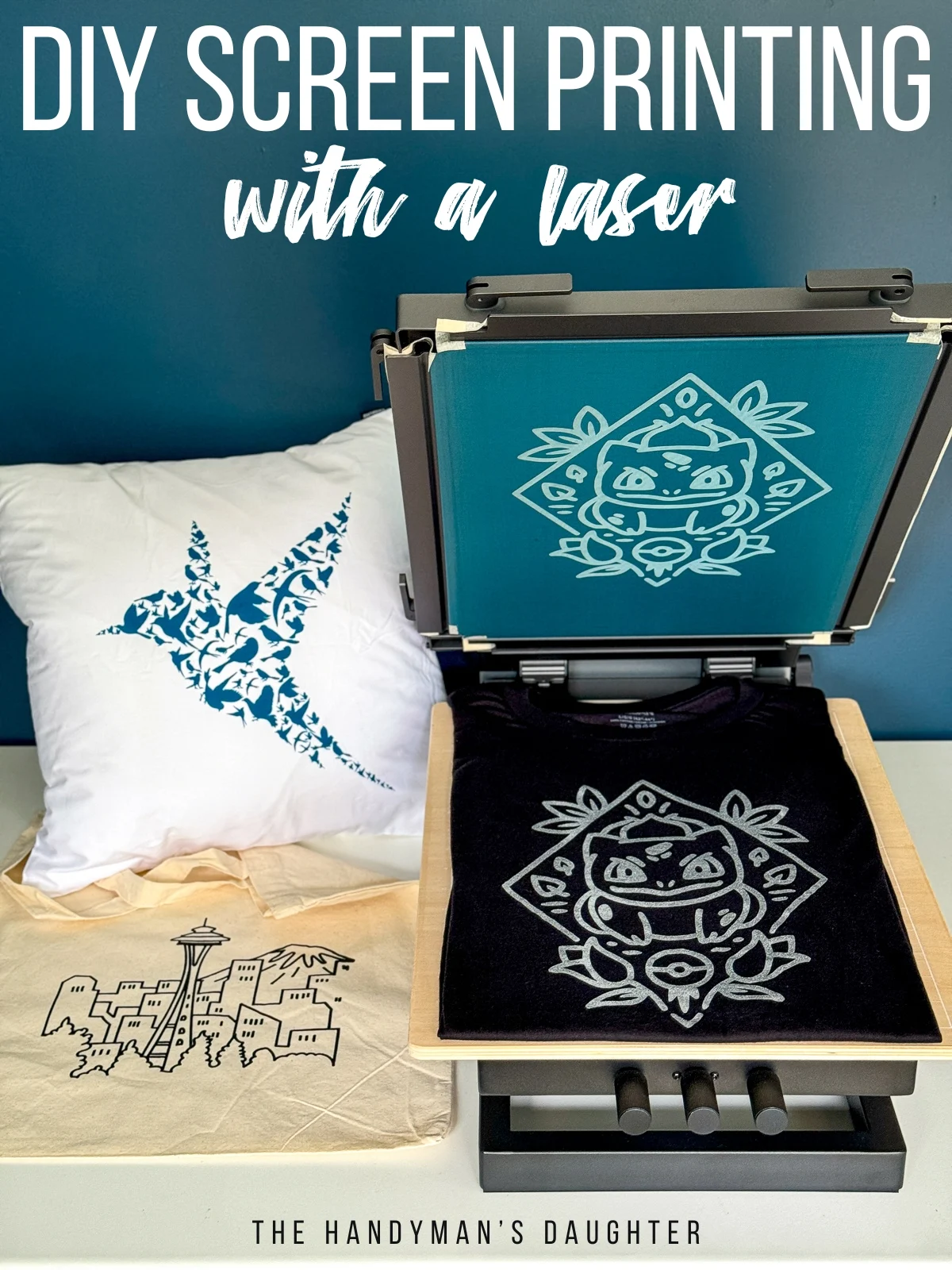The Vital Guide to Comprehending Screen Printing and Its Versatile Makes use of
Screen printing has an abundant history that goes back to old times, advancing into an advanced technique used across numerous markets today. This overview checks out the ins and outs of the screen printing procedure, describing its applications in advertising and marketing, style, and home décor - 10:9 Design Screen Printing. Recognizing these principles can open imaginative capacity for both industrial and imaginative projects. The adhering to areas will disclose essential suggestions and methods to boost one's screen printing ventures
The History of Screen Printing
Screen printing has roots that trace back centuries, its evolution reflects the technological and artistic developments of different cultures. Coming from old China, the technique was originally made use of for enhancing textiles and later infect Japan, where it came to be essential to Ukiyo-e woodblock printing. The technique shifted to Europe in the 18th century, where it gained popularity amongst artisans and industrial printers. The development of image emulsion in the 20th century transformed screen printing, allowing for even more elaborate designs and greater efficiency. Musicians like Andy Warhol additionally drove its appeal, using the tool to develop famous works that mixed commercialism and fine art. By the late 20th century, screen printing had developed itself as a functional technique, utilized in style, marketing, and art. Today, it remains to evolve, integrating digital modern technology and broadening its applications across numerous markets.
The Screen Printing Refine Explained
Screen printing transforms imaginative visions into concrete layouts via a series of precise actions. At first, an image is developed and afterwards moved onto a screen, typically made from great mesh textile stretched over a frame. A light-sensitive emulsion is used to the screen, which is revealed to light, hardening in areas not covered by the image. After cleaning out the unhardened solution, a stencil is developed.
Next, the screen is positioned over the substrate, whether it be material, paper, or an additional material. Ink is after that pushed through the open locations of the stencil using a squeegee, depositing the style onto the substrate listed below. This process can be repeated for numerous shades, requiring separate displays for each and every tone. The published thing is treated making use of heat to guarantee the ink sticks properly, resulting in a sturdy, lively layout all set for use.
Kinds Of Screen Printing Techniques

Furthermore, specialized strategies, such as discharge screen printing, get rid of dye from the textile to create softer prints, while aluminum foil screen printing uses metallic aluminum foil to attain a glossy finish (10:9 Design Embroidery). Each method uses unique qualities, dealing with different innovative requirements and production scales, eventually expanding the possibilities within the screen printing domain
Applications of Screen Printing in Numerous Industries

Furthermore, the signs and advertising and marketing industries make use of screen printing for developing distinctive displays and banners. This approach enables bold shades and detailed styles that record attention. In electronics, screen like it printing is employed for using conductive inks to circuit card, essential for part links. Furthermore, the home style industry accepts screen printing to create distinctive layouts on textiles and wall surface art. Generally, screen printing acts as an essential device across varied fields, enhancing items with customized and aesthetically appealing graphics.
Tips for Successful Screen Printing Projects
While taking on a screen printing job, cautious attention to detail can considerably improve the last outcome. Initially, choosing premium products is crucial; this consists of the screen, inks, and substratums. Making use of ideal mesh counts can impact ink deposition and detail resolution. Prep work is similarly vital; detailed my explanation cleaning of displays and appropriate exposure times assure crisp prints.
Next, accurate registration is important for multi-color prints. Making use of placement tools can assist accomplish specific layering. Additionally, screening prints on scrap materials prior to manufacturing aids determine potential concerns without losing sources.

Regularly Asked Inquiries
What Products Are Ideal for Screen Printing on Fabric?
Cotton and polyester blends are perfect for screen printing on textile due to their sturdiness and ink absorption. In addition, specialty fabrics like silk or canvas can generate one-of-a-kind appearances and finishes, improving the general style top quality.
Exactly how Do I Clean and Maintain Screen Printing Tools?
To preserve and cleanse screen printing tools, one must on a regular basis clean screens with proper solvents, check squeegees for wear, lubricate moving components, and store all things in a completely dry, dust-free environment to extend their lifespan.
What Are the Ecological Effects of Screen Printing?
Screen printing can have substantial ecological impacts, including chemical waste from inks and solvents, water usage during cleaning procedures, and energy usage. Lasting techniques and environment-friendly products are crucial for minimizing these negative impacts.
Can Screen Printing Be Done in the house Efficiently?
Screen printing can be effectively done at home with the right products and techniques. Enthusiasts can produce quality prints, though success depends on their go to my blog skill degree, equipment, and understanding of the process included.
What Are the Prices Related To Starting a Screen Printing Company?

Beginning a screen printing organization involves costs for tools, materials, and workspace. Initial expenditures usually vary from a few hundred to several thousand bucks, relying on the range, high quality of equipment, and wanted production capability.
Screen printing has an abundant background that dates back to old times, progressing right into an advanced method made use of throughout various industries today. An additional method, rotating screen printing, employs cylindrical displays, promoting continuous printing on textile rolls, consequently improving performance for massive productions. In addition, specialty strategies, such as discharge screen printing, remove color from the fabric to produce softer prints, while foil screen printing uses metallic aluminum foil to achieve a shiny surface. In the fashion field, screen printing is extensively utilized to produce lively styles on clothing, allowing brand names to display their one-of-a-kind designs. Cotton and polyester blends are perfect for screen printing on material due to their toughness and ink absorption.